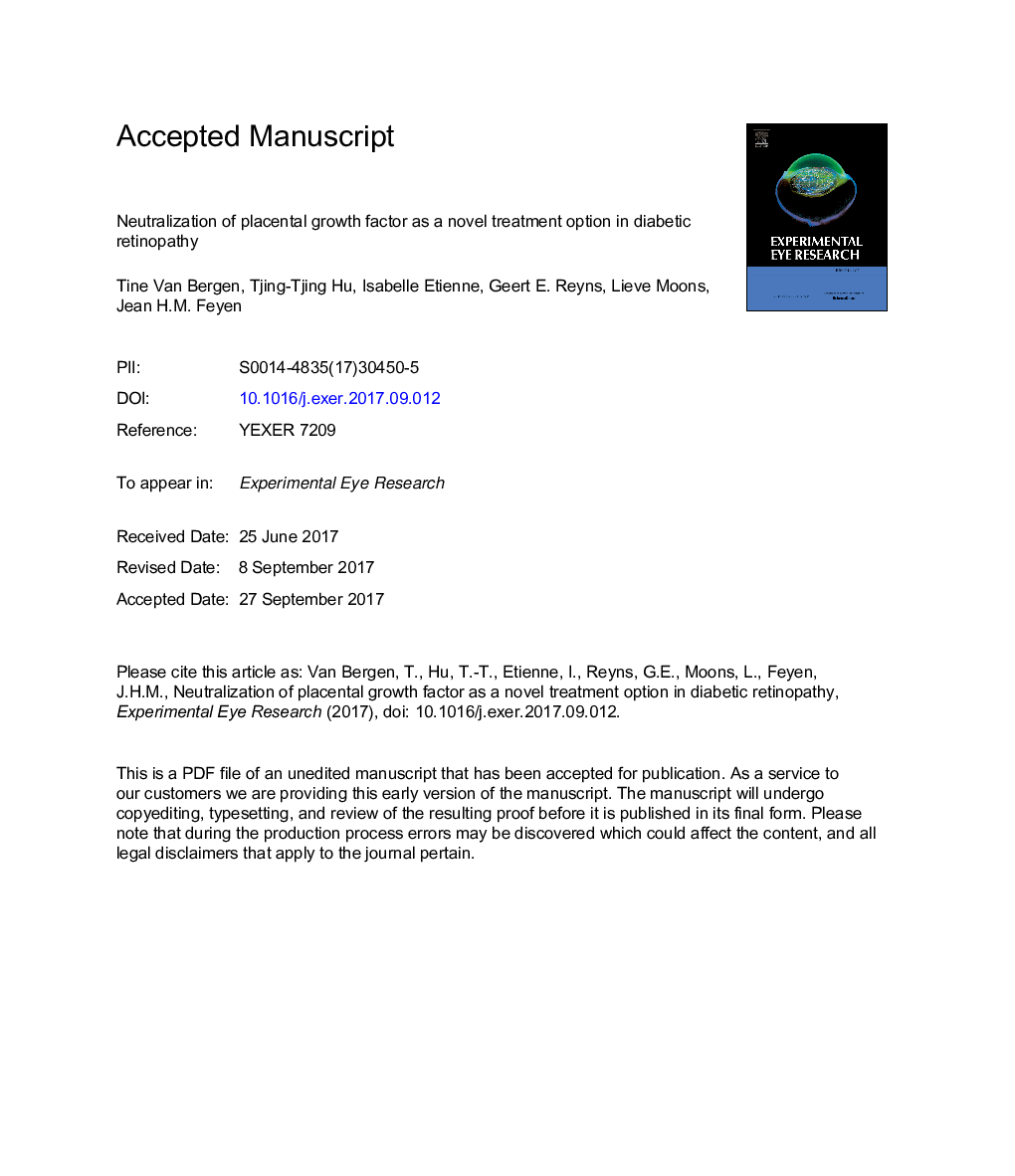| کد مقاله | کد نشریه | سال انتشار | مقاله انگلیسی | نسخه تمام متن |
|---|---|---|---|---|
| 5703949 | 1602557 | 2017 | 53 صفحه PDF | دانلود رایگان |
عنوان انگلیسی مقاله ISI
Neutralization of placental growth factor as a novel treatment option in diabetic retinopathy
ترجمه فارسی عنوان
خنثی سازی فاکتور رشد جفتی به عنوان یک روش درمان جدید در رتینوپاتی دیابتی
دانلود مقاله + سفارش ترجمه
دانلود مقاله ISI انگلیسی
رایگان برای ایرانیان
کلمات کلیدی
عامل رشد پلاستیکی، رتینوپاتی دیابتی، ادم ماکولا دیابتی، نشت، التهاب عصب مغزی فیبریزه،
موضوعات مرتبط
علوم زیستی و بیوفناوری
ایمنی شناسی و میکروب شناسی
ایمونولوژی و میکروب شناسی (عمومی)
چکیده انگلیسی
The current standard of care in clinical practice for diabetic retinopathy (DR), anti-vascular endothelial growth factor (VEGF) therapy, has shown a significant improvement in visual acuity. However, treatment response can be variable and might be associated with potential side effects. This study was designed to investigate inhibition of placental growth factor (PlGF) as a possible alternative therapy for DR. The effect of the anti-PlGF antibody (PL5D11D4) was preclinically evaluated in various animal models by investigating different DR hallmarks, including inflammation, neurodegeneration, vascular leakage and fibrosis. The in vivo efficacy was tested in diabetic streptozotocin (STZ) and Akimba models and in the laser induced choroidal neovascularization (CNV) mouse model. Intravitreal (IVT) administration of the anti-PlGF antibody was compared to anti-VEGFR-2 antibody (DC101), anti-VEGF antibody (B20), VEGF-Trap (aflibercept) and triamcinolone acetonide (TAAC). Vascular leakage was investigated in the mouse STZ model by fluorescein isothiocyanate labeled bovine serum albumin (FITC-BSA) perfusion and in the Akimba model by fluorescein angiography (FA). Repeated IVT administration of the anti-PlGF antibody reduced vascular leakage, which was comparable to a single administration of VEGFR-2 inhibition in the mouse STZ model. PL5D11D4 treatment did not alter retinal ganglion cell (RGC) density, as demonstrated by Brn3a staining, whereas DC101 significantly reduced RGC number with 20%. Immunohistological stainings were performed to investigate inflammation (CD45, F4/80) and fibrosis (collagen type 1a). In the CNV model, IVT injection(s) of PL5D11D4 dose-dependently reduced inflammation and fibrosis, as compared to PBS treatment. Equimolar single administration of the anti-PlGF antibody and aflibercept (21 nM) and TAAC decreased leukocyte and macrophage infiltration with 50%, whereas DC101 and B20 (21 nM) had no effect on the inflammatory response. Similar results were observed in the mouse STZ model on the number of microglia and macrophages in the retina. Repeated administration of PL5D11D4 (21 nM) and TAAC similarly reduced fibrosis, while no effect was observed after equimolar DC101, B20 nor aflibercept administration (21 nM). In summary, the anti-PlGF antibody showed comparable efficacy as well-characterized VEGF-inhibitor on the process of vascular leakage, but differentiates itself by also reducing inflammation and fibrosis, without triggering a neurodegenerative response.
ناشر
Database: Elsevier - ScienceDirect (ساینس دایرکت)
Journal: Experimental Eye Research - Volume 165, December 2017, Pages 136-150
Journal: Experimental Eye Research - Volume 165, December 2017, Pages 136-150
نویسندگان
Tine Van Bergen, Tjing-Tjing Hu, Isabelle Etienne, Geert E. Reyns, Lieve Moons, Jean H.M. Feyen,
